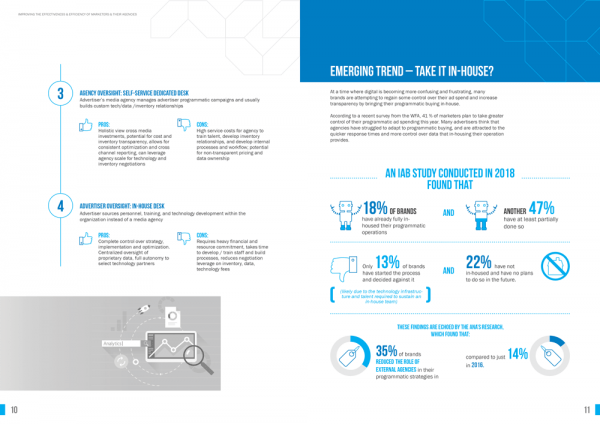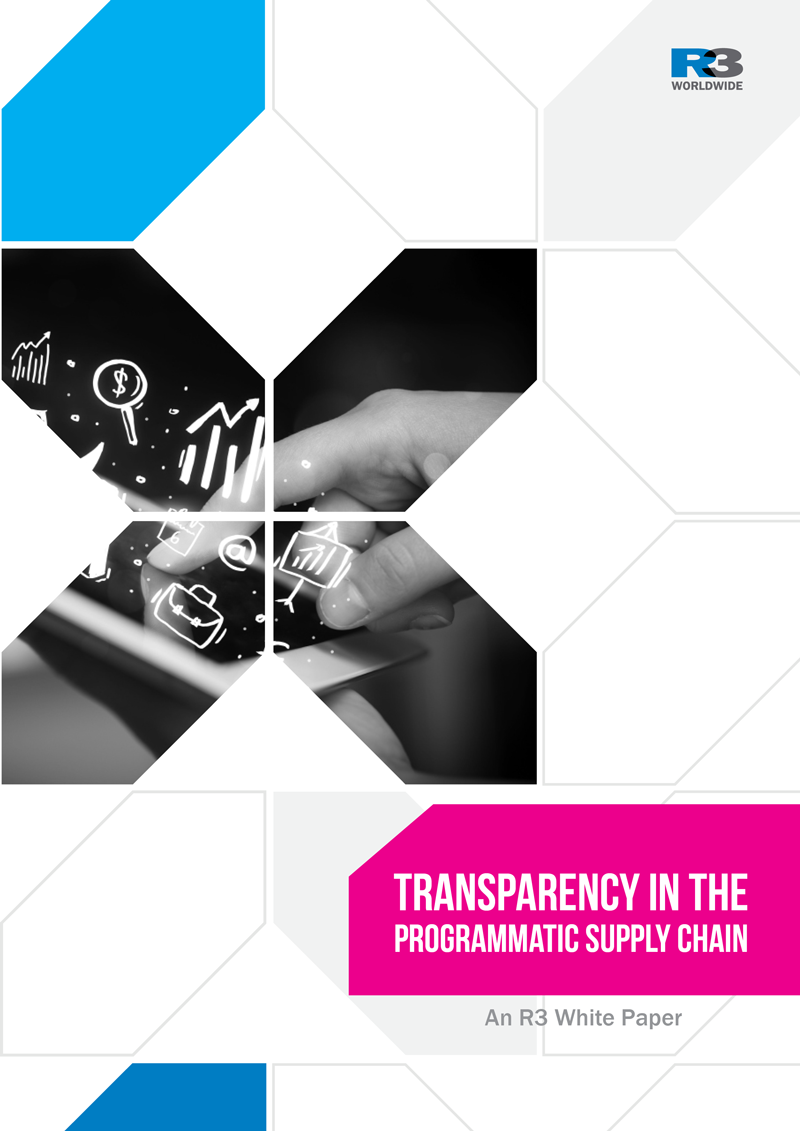The demand for transparency in programmatic has been steadily on the rise for the past several years. In the age of digital transformation, most advertisers have gained a greater understanding of programmatic media buying, and fully realize that fraud and non-transparent buying practices are both costing them money and creating brand safety issues.
The model of the agency trading desk handling 100% of an advertiser’s programmatic spend is on the decline as more and more CMOs seek to in-house their programmatic operations to gain control. However, it is not only the marketers that have suffered from the lack of transparency. Agencies and publishers alike have faced their own challenges in trying to clean up the programmatic buying process.
The first step in driving transparency in programmatic is to understand the supply chain and go-to-market models. In this paper, we will seek to explain the complexities of the programmatic value chain, identify which global marketers are making headway in the fight for greater transparency, and provide six steps that CMOs can use when deciding which programmatic model is right for their marketing operation and overall business goals, as well as how to set it up for long-term success.


